
Museum London opened its doors 80 years ago and to mark this anniversary we've launched an online exhibition! 80ML pairs 80 objects from our permanent collection--40 works of art and 40 historical artifacts--with written responses from 80 Londoners, who bring a fresh perspective to the Museum’s artistic and historical holdings.
About the beer cans
Below you'll find more information about the art and artifacts depicted on our limited edition cans by Anderson Craft Ales. You can purchase the cans directly from Anderson while they last! (UPDATE: Sold out)
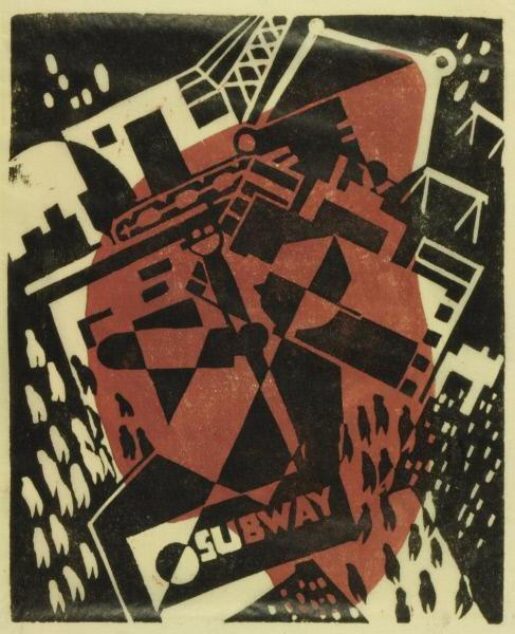
Mackie Cryderman, Untitled (detail), about 1954. Collection of Museum London. Gift of the Estate of Clifford Cryderman, London, Ontario, 1995.
From 1927 to 1962, Vera “Mackie” Cryderman developed and taught the arts curriculum at Beal Secondary School. It was wide-ranging and experimental, gaining renown across the province and country for its excellence in printmaking, painting, sculpture, metalwork, pottery, and even set design. This print reveals her mastery of stylized pattern.
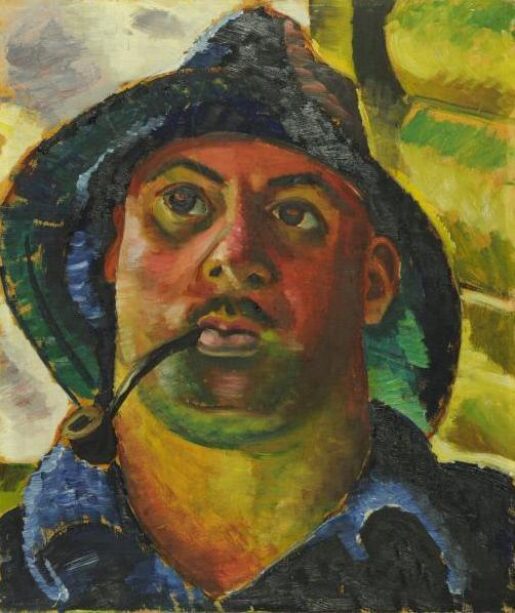
Prudence Heward, Untitled: Portrait of a Fisherman, about 1935
Prudence Heward was a Montreal painter associated with the important Beaver Hall Hill Group. She was an early proponent of Modernist approaches in Canada, and her paintings are renowned for their "brilliant acid colours” and “intense brooding quality."
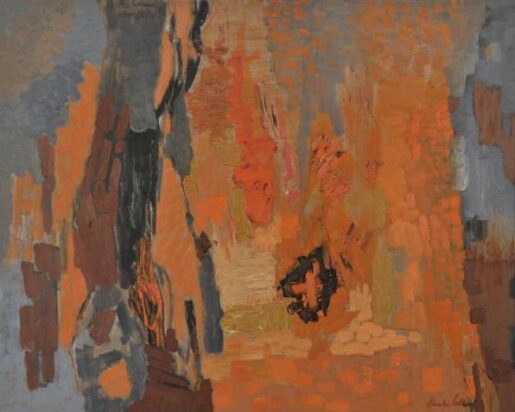
Alexandra Luke, Sound Vibrations, 1963
In 1952, Luke eloquently articulated her approach to colour, observing that it “is a very important instrument to be played like a flute or a trumpet or like a symphony, controlled intuitively but uninhibited.” The next year, Luke helped form the Painters Eleven, a Toronto-based group brought together by their explorations of abstraction.
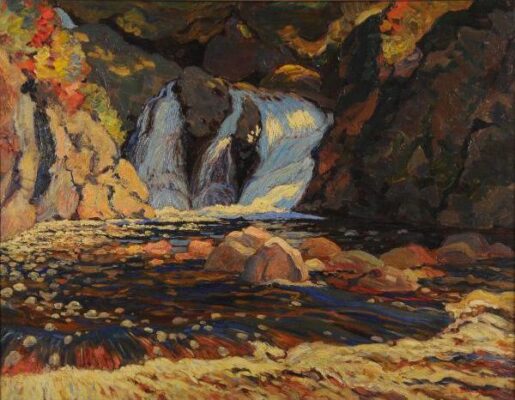
J. E. H. MacDonald, The Little Fall, 1919
James Edward Hervey MacDonald was a founding member of the Group of Seven, a group of painters who first exhibited 101 years ago. MacDonald and his colleagues asserted a Canadian identity through the depiction of the wilderness. His art was influenced by Scandinavian and British painting and design as well as the works of American Transcendentalist writers such as Thoreau and Whitman.
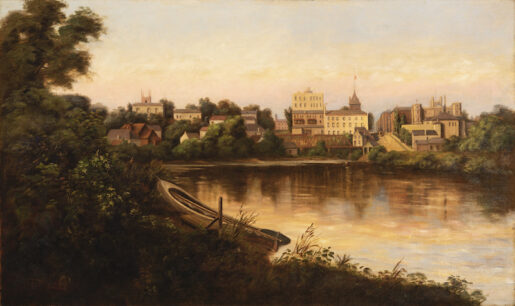
John Munnoch. Untitled (Thames River, looking across to old courthouse site of current Museum London) (detail), 1902
Scottish-born artist Munnoch worked as a draughtsman and pattern maker for the McClary manufacturing company in the Chelsea Green area of London. He made landscape paintings of the city that include many buildings we can still see today, such as the Old Courthouse and St. Paul’s Cathedral.

Paul Peel, The Covent Garden Market, London, Ontario, 1883.
Paul Peel is London, Ontario’s best-known historical artist. Trained in the art salons of France, in 1883 he spent the summer and fall in London. Here he made this well-known painting of Covent Garden Market which, established in 1835, continues to be an important downtown hub.

Photograph, Dundas Bridge at the Forks, April 1937. Collection of Museum London, Gift of Ben Fisher, 1984
Pictured here is a photograph of the Dundas Bridge at the Forks of the Thames River during the April 1937 flood. This photograph adds to our local history by suggesting the destruction caused by one of the worst, if not the worst, flood in London’s history.
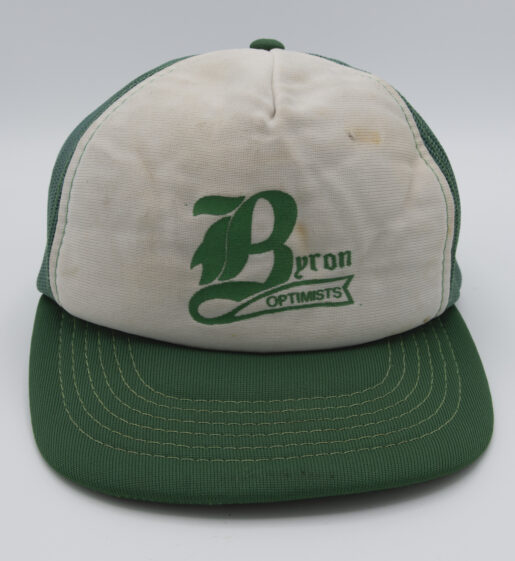
Baseball Cap, Byron Optimists, 1983. Collection of Museum London, Gift of Milyn Hall, 2006
This baseball cap formed part of Milyn Hall’s 1983 Byron Optimists baseball uniform and was added to the collection in 2006. Hall wore it as he co-coached the team, winners of the Juvenile Ontario Baseball Association Ontario Championship in 1984.
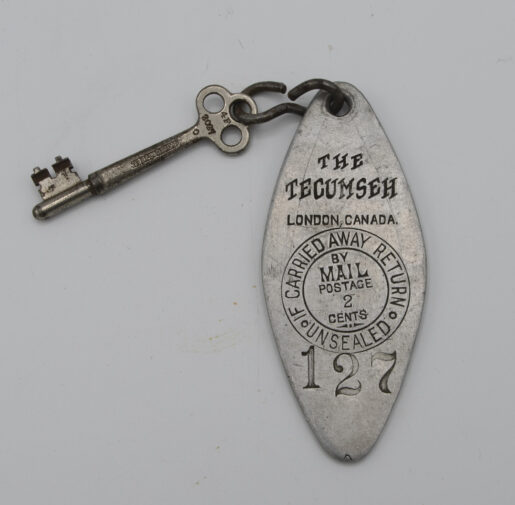
Room Key, Tecumseh House Hotel, Before 1929. Collection of Museum London, Transfer from the London and Middlesex Historical Society, 1958
This key for room 127 at the Tecumseh House Hotel was added to the collection in 1958. This facility was London’s premier hotel from its construction in 1856, hosting princes, political figures, and other celebrities. It was demolished in 1929.
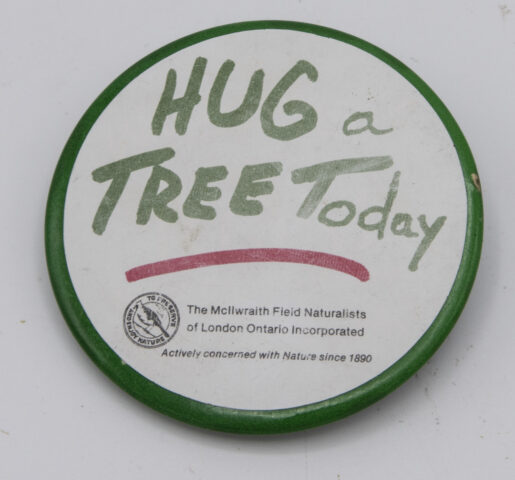
Button, Hug a Tree Today, Around 1980s. Collection of Museum London, Gift of Judith and Wilson Rodger, 2018
This McIlwraith Field Naturalists of London (today called Nature London) “Hug a Tree” button was added to the collection in 2018. The group, formed in 1864 and still going strong, has spent more than 150 years encouraging Londoners to “preserve and enjoy nature.”
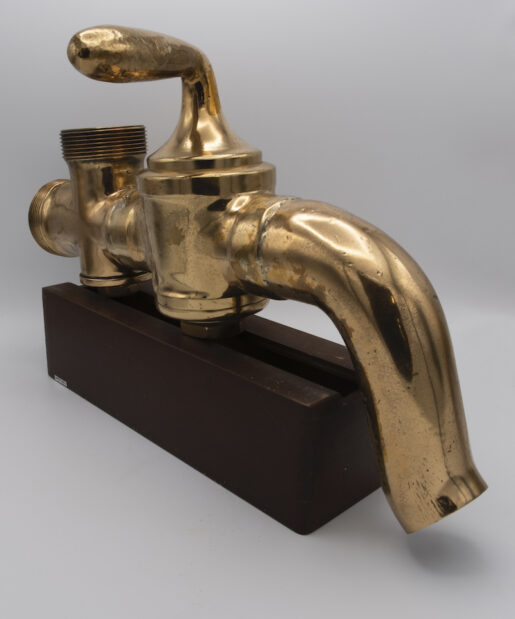
Beer Valve, Around 1950. Collection of Museum London, Gift of Labatt Brewing Company Limited, 2010
Pictured here is a threaded beer spigot, also known as a tap. It was added into the Labatt Brewing Company Limited collection at Museum London in 2010. This artifact shows the long history of Labatts and also of beer brewing in the city.
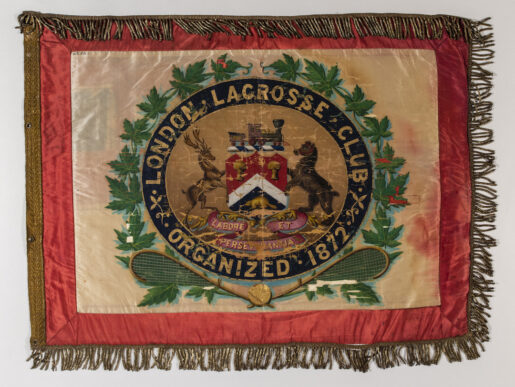
Banner, London Lacrosse Club, 1872. Collection of Museum London, Gift of the University of Western Ontario, 1962
This vibrant London Lacrosse Club banner came into the collection in 1962. The team received it and three others in 1872 from the ladies of London to decorate the goal posts during games.